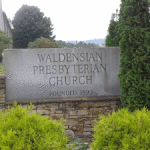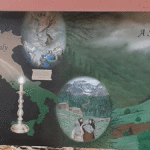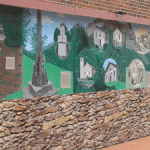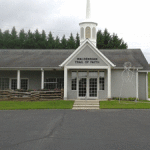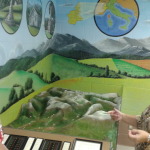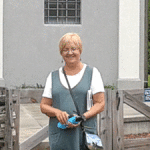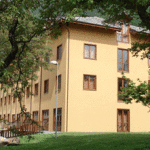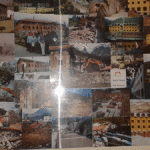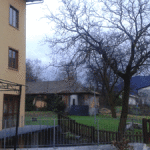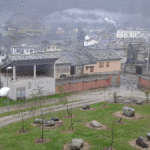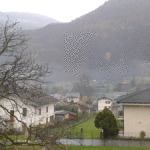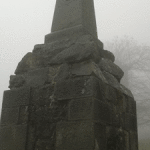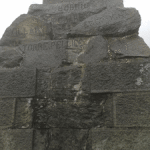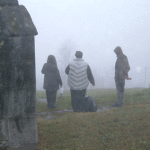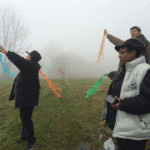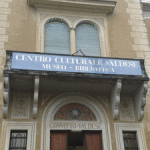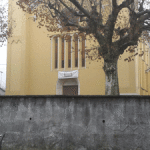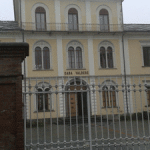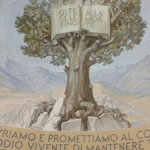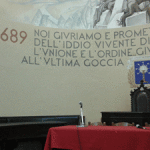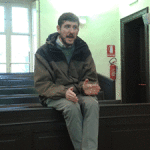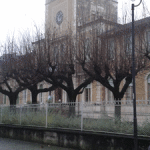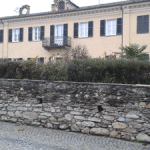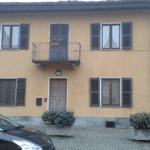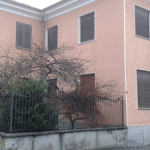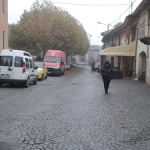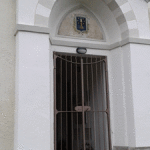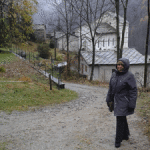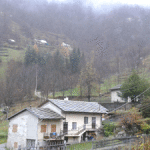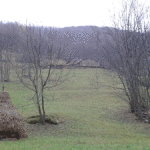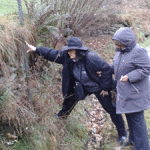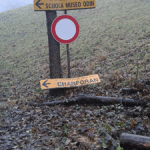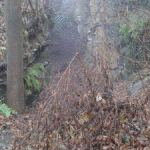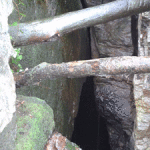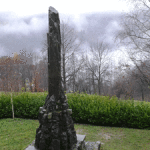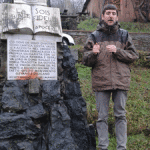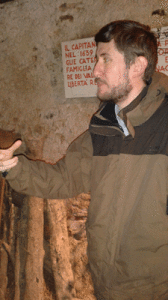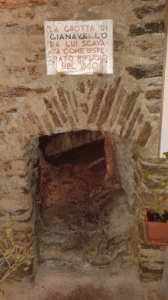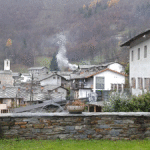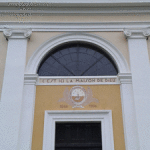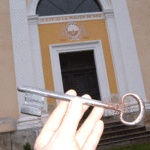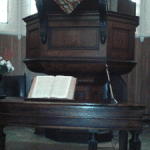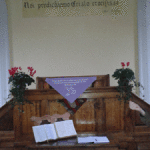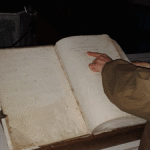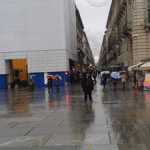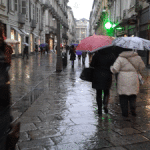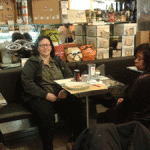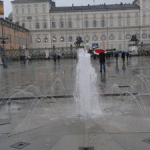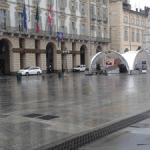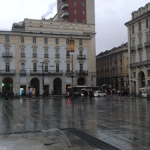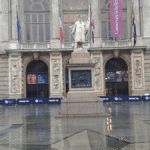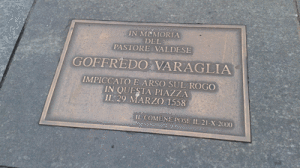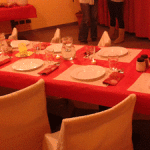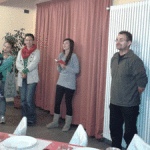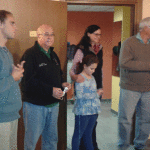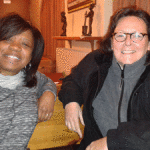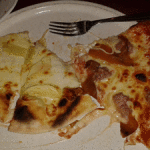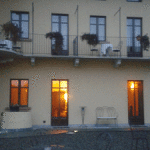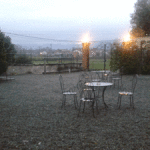A Kislev Firstfruits Offering to the Lord
“I want you to go to a town in the Northwest corner of Italy near the border of France”
This is what I (Yvonne) heard in my spirit. I immediately said yes, did some research but I didn’t seem to find “the town” so I set it aside. However the impressions grew in intensity. I “happened” to read Peter Wagner’s Queen’s Domain book during this time and I began to understand the significance of what was happening throughout Europe. And in June, I even found another prayer journey companion – while at Glory of Zion in TX on the last day of the Pentecost Celebration Conference, I become re-acquainted with Stephanie, an elder, now pastor, that I knew over 24 years ago. Upon mentioning this impression from the Lord, she immediately said “I believe I am to go with you”. But where was that exactly?
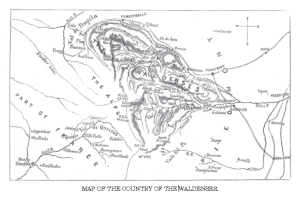
Well a few days later while back home watching a DVD of Revival teaching with Robert Heidler, I watched as he mentioned again about the Waldensians, one of the lights from the dark ages, but this time his PowerPoint showed a map of the Waldensians living in the midst of the French and Italian Alps. Finally a specific focus! Now onto more targeted research – the “town” to go to pointed to Torre Pellice in the Piedmont Region, Northwest Italy, near the border of France.
Once I had that firm internal nod, I ran everything by Linda Heidler and she wrote back that she bore witness to the prayer journey, noting that was the one historical revival location she and Robert did not get to visit. More research revealed that 29 Waldensians actually founded a town in NC called Valdese. So I teamed up with our Strategic Prayer Outing Leader Lisa Flynn and we found an open date on our calendars to visit, believing for confirmation on the town and other arrangements we were planning.
And there, we met Pat Butler from OM Arts who just happened to have recently returned from Bobbio Pellice in Italy and just happened to visit on the same day and also just happened to have a burning passion to find out more about the Waldensians in hopes that the fire that they carried would once again sweep through the church at-large. So we were blessed with confirmation on the area to visit; the place to stay, “Forterocca” in Bobbio Pellice, which was also the place that friends of Linda Heidler recommended; and a new-found friend! The volunteer on duty just shook her head as we left, marveling as to how it was possible for us to “just so happen to come on the same day”.
Onto Italy – “No worries, you are fully insured”, “Oh my, you are very, very far”
Our prayer journey to Italy physically began on Tuesday, Nov. 25th; we were now a team of three flying out from Charlotte to Turin via Frankfurt. We had researched, prayed, our intercessors armed us with prophetic words about angels, divine encounters, being forever changed and with various scripture passages including decrees in Italian. We arrived the next day in Italy about 2:00 pm, picked up our manual transmission rental car with GPS that was programmed for English but with a very heavy Italian accent, and got on our way with a word from the counter agent saying “No worries, you are fully insured”. Those words became our cheer as we made our way from Turin to the Pellice Valley.
We set out about 3:00 pm for a 1.5 hr journey. By 5:30 pm, we were still on the road; it was very dark and raining so we called to Forterocca since there was no one around who spoke English. We finally meet Eliseo the Director of Forterocca via phone and he kindly asks me to hand the phone to someone at the gas station. After a brief exchange, he tells me “oh my, you are very, very far”. So we retrace our steps, make a few more wrong turns, and traverse winding roads with many circles in heavy fog. The fog is sooo thick we wonder if we will ever find Forterocca. Lisa in her new role as faithful navigator is looking down at the map, trying to listen to the GPS, suddenly looks up and turns her head and “ah, Forterocca!” (We find out later that Forterocca itself has quite a tale to tell.)
We do a quick check-in, bag drop off and make our way to the nearby restaurant down an alley way (aka 2-way street) that at times had barely enough room for a single car with a laugh “no worries, we are fully insured”. We make our way around the curves to a place that “no parlez Francais” to follow a finger point to a small family-owned Pizzeria up the hill with a wonderful owner who gives us English menus – so we point, smile and nod our way to a wonderful meal – ciao bella!
“Luca and Two Days of ‘A faith that is stronger than life’”
“Bobbio Pellice and Monument at Sibaud”
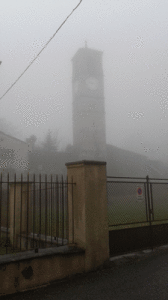
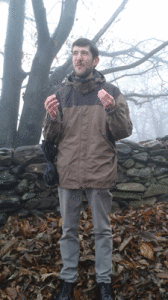
We meet Luca our guide from the Waldensian Cultural Center in the Town Square of Bobbio Pellice the next morning. (We find out later that he is Waldensian and can trace his roots back to the 1450s.) The fog is still heavy, it is slightly raining but at least there is daylight. As Luca tells us of the history of the area, he looks at his new crew, smiles and says he wants us to experience what the Waldensians in that town had to live through. They were constantly being raided and got use to climbing up the hillside where there were hidden paths and caves where they stored food and supplies. And although many were killed, they kept coming back to the land because of their faith in the Word of God and to honor their Lord and Savior Jesus. They held to Rev. 2:10, knowing that they did not wrestle with flesh and blood –they walked in a spirit of forgiveness against those who attacked them – but they did not want to give ground to the spirit of anti-Christ and thereby offend their Savior. So they were faithful unto death with a faith that is stronger than life.
At Sibaud further up the hill was a monument erected in 1889 to commensurate the 200-year anniversary of their glorious return. Back in 1689 after years of heavy persecution, the Waldensians went into exile in Switzerland. Yet they had no peace. Again Rev. 2:10. So leaving the older ones and women further up the mountain, a group of young people – the oldest one being 24 – made their way back down to the hill above Bobbio Pellice. They soon found themselves surrounded on all sides but they dug trenches and worshiped and prayed. A letter written by one young French soldier contained how they marveled at the faith of these people who sang when they knew they were about to be killed. And lo and behold, a heavy fog settled in over the area and one young lad remembered a passage way out. So under a blanket of fog they had escaped. The French soldier’s letter also commented about the fog and how they knew God must be with them.
We were like wow – my oh my, the fog! Lisa then shared with Luca how years ago while living in California she was praying during a worship service and she saw a thick fog in the sanctuary and ribbons floating by. It was some aspect of the Glory. Then when the three of us were praying before leaving for this trip, she saw those ribbons again. She knew that the Glory was either over this area or was to be released over this area.When she released that word during our prayer time, I saw that the Glory that would be released would restore the Song of the Lord over this area, that worship would once again flow down the mountain over the valley and region, even to Turin which had become a center of satanic worship. So I brought along RHM’s worship ribbon streamers in hopes of doing a prophetic act on the mountains of Italy.
Luca nodded and said that Torre Pellice and Bobbio Pellice basically have the same weather and that the day before it had been clear all day. He said yes that the fog there that day was unusual for this time of year.
So when we got to the Sibaud monument we prayed and worshiped for a while, waving those ribbons. We prayed for the remitting of sins and the removing of curses brought on by the shedding of innocent blood. We blessed the land and released a continuation of faith and Glory.
Later that night when we were back at Forterocca, I showed Lisa a painting on the wall by one of the art students who had attended a program there. It was of a woman worshiping on the hill overlooking Bobbio Pellice. Her worship is in the form of ribbons extending over the area just like the ones we brought!
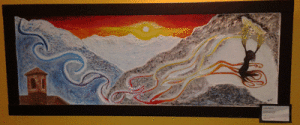
Torre Pellice – Waldensian Church, The Synod and Waldensian Cultural Center
“Lux Lucet in Tenebris” (A Light Shining in the Darkness).

This is the motto of the Waldensian Community – their crest shows a lit candle on a bible with the seven stars around it. An article found during research explains: “We are like a lamp that carries the light of the Gospel and we are like the persecuted churches in Rev. 1:16.”
How profound – the Lord told me before we departed that this trip is my Kislev Offering to him. I was not able to watch the Firstfruits service for Kislev until I returned and I was amazed when I heard Robert Heidler say that Kislev is the month where the days are shorter and move into ever increasing darkness. However it is also the month of Hanukkah, the Festival of Lights – he called it the month of the “light shining in the darkness”.
“Links in the chain”
While in the Synod in Torre Pellice, I asked Luca about the varying stories of the origins of the Waldensian Faith. He said he was of the belief that the stories are all links in the chain. I asked him specifically about Bishop Claudius of Turin as I had found this note about him “being burned at the stake in 839 AD for passionate protests against the Medieval church and that in 1805, when Napoleon asks the Moderator of the Waldensian Church, ‘How long is it since you became an independent church?’ — his reply is: ‘Since the time of Claudius, Bishop of Turin.'” Luca responded:
And Luca emphasized to us the main themes have held true through more than a thousand years – “be faithful, be the prophet, be prayerful”.
A walk through time
And we saw those themes displayed throughout our tour of the Waldensian Cultural Center Museum which included a love of the Holy Scriptures, the spirit of and training for evangelism – “the barbas” – and a faith stronger than life amidst an onslaught of violence, murder, and broken covenants.
One writer called them the “Israel of the Alps” and Milton captured their plight in this poem:
“Avenge, O Lord, thy slaughtered saints whose bones
Lie scattered on the Alpine mountains cold:
E’en them, who kept thy truth so pure of old,
When all our fathers worship’d stocks and stones,
Forget not; in thy book record their groans,
Who were thy sheep, and in their ancient fold
Slain by the bloody Piedmontese, that roll’d
Mother with infant down the rocks. Their moans
The vales redoubled to the hills, and they
To heaven. Their martyr’d blood and ashes sow
O’er all the Italian fields, where still doth sway
The triple tyrant; that from these may grow
An hundred-fold, who, having learnt thy way,
Early may fly the Babylonian woe!” MILTON.

“Angrogna and Rora” – The Barbas, Churches, The Cave, Chanforan, and the Lion
The Angrogna Valley is home to the Barbas college hidden amongst the homes on the mountainside. The Barbas (or “uncles”) studied the word there and were discipled in evangelism; they were sent out all across the nation – 2 x 2. And the bonfire structure is set waiting for the celebration of emancipation day – on February 17th, 1848, “The Edict of Emancipation” signed by King Charles Albert gave civil liberties to the Waldensians.
Angrogna is also the place where over 200 Waldensians who had retreated to a cave were smoked out and slaughtered. But it is also a place of hope – Chanforan in Angrogna is the gathering place where the leaders from all around the region affirmed joining the Reformation. This affirmation came after much prayer (15 years) was released and assurances were received that their statement of faith would not be modified. I was amazed that they were not isolationists and proud of the meditative approach they took to join in with the movement. From research, the Reformation leaders were very honored to have the Waldensians as they were all very impressed and inspired by their faith.
(Our research for a recent outing to Moravian Falls here in NC also revealed that nine members of The Brethren of the Law of Christ were ordained into the ministry by the Waldensians, “three of them, Matthias, Thomas and Elias, were consecrated as bishops. So commenced the line of bishops in our Moravian Church”. And Count Zinzendorf and the Moravians and their Prayer Watch and mission work helped birth the First Great Awakening.)
The Rora’ Valley was the stage for the resistance of the Waldensians in the persecution /massacre of 1655 called “The Spring of Blood”. Many Waldensians were carried up to the cliffs and were thrown into the river below if they did not deny their faith – it was said that the river ran red with blood. One testimony to their “faith that was stronger than life” is the story of one of the leaders of the resistance, Joshua Gianavello (aka the Lion of Rora). In an attempt to deter him, the Duke of Savoy kidnapped Gianavello’s wife and two daughters and threatened that he would kill them if Gianavello did not renounce his faith and become a Catholic. Gianavello wrote back and said his wife and children were prepared to meet their Lord and he would not convert. The Duke finally relented and released his family. Gianavello became the strategist of the resistance – he even built a tunnel from his home to the one up the hill as a way of quick escape. Of note is that the Waldensians were trained by him to only defend themselves and never to attack.
Rora as well as the other valleys is also home to one of the many churches that had been repeatedly destroyed – eight times for the one below – but the church still stands – and Lisa has the key! And part of the key was their central focus on the Word of God:
“Turin”
A day in the city to prayer walk over the underground satanic church. The area was obviously a portal but because of the iniquity, the portal went both ways. So our assignment was to pray in the spirit there and walk as Holy Spirit led. We wanted to take a peek at the Shroud of Turin so we walked to the museum but it was closed for several hours. So we headed back through the shopping district and stopped for lunch.
Our other assignment was to find a plaque at Piazza Castello that Eliseo told us about. The plaque marked the spot where a young Waldensian pastor who had defied the church’s forbidding of preaching the gospel was burned to death for his efforts. Upon our arrival to the large square at Piazza Castello, we knew finding that plaque would be a miracle.
As we were making our way across the square to just find any spot to pray, Lisa looked down and there was the plaque. Revelation 2:10 (NKJV) Do not fear any of those things which you are about to suffer. … Be faithful until death, and I will give you the crown of life.
“The journey home”
We stayed one last quick night in Italy and we headed to the airport about 3:30 am. On the way, we stopped at the self-service station for gas – that was about 3:50 am. Just by chance this man pulled in and he was able to help us figure out how to run the pump – thank you Lord! We then found the rental car return and did another shout out for our safety over the past few days. We had returned the car without a scratch even though “we were fully insured”. And we knew that our real “insurance” were the company of angels our intercessors had prayed in.
Then at the airport, we were nearly the only ones there. We found our gate and a row of seats to wait. 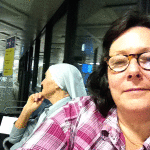 Pretty soon a nun came and sat next to Lisa. It struck her as a bit odd since there were plenty of empty seats in the row as well as the rest of the waiting area. But at most of the places we visited during our trip we had prayed for the forgiveness of sins, reconciliation, and renewal of the Catholic Church. So we all felt that this was a sign.
Pretty soon a nun came and sat next to Lisa. It struck her as a bit odd since there were plenty of empty seats in the row as well as the rest of the waiting area. But at most of the places we visited during our trip we had prayed for the forgiveness of sins, reconciliation, and renewal of the Catholic Church. So we all felt that this was a sign.
Lord, we do offer up this journey as our Firstfruits offering to you for the month of Kislev. We decree a fresh release of the Glory carried by your people known as the Waldensians to set your Church on fire with a faith that is stronger than life, a renewed love of your Word and the passion to preach the gospel regardless of who opposes us! We decree Lord that we will “be faithful, be the prophet, and be prayerful” as your “lights in the darkness!” AMEN.
p.s. “An American Thanksgiving with our new friends”
Eliseo, his family and staff all invited us to an American Thanksgiving that they had prepared. We were so honored and thrilled.
We also met Pat Butler’s friend Lanette and her husband who were moving onto Pisa the next day. At dinner, Eliseo told me about his passion for the Waldensians and for all that had taken place at Forterocca. And we both longed to see the Lord release the blessing of this rich heritage upon all of Italy and the rest of the world. During our time earlier that day, Luca told us how Italy was still only 1% Protestant and how many in the nation had no real knowledge of the height, depth and breadth of the truth contained in our beloved Scriptures. So our hearts ached as we fellowshipped. We told Eliseo that we would surely return to help.
p.p.s. A few fun photos:
Cia bella!
A snapshot of history from the Waldensian Trail of Faith in NC
1487
Cataneo’s War against the Waldensians, ignited by Pope Innocent VII’s declaration that “whoever kills a Waldensian will have pardon for his sins and the right to keep any property taken from his victim.”
1487 – 1689
The Waldenses fight 33 wars to defend their faith.
Sept. 1, 1689
“The Oath of Sibaud.”Waldensians pledge loyalty to one another to fight to the death until all their Valleys are reclaimed.
1698 – 1804
Though the wars have ceased, full civil and religious liberty remain elusive for Waldensians, who continue to endure severe restrictions, depending upon which rulers are in control.
1827
General Charles Beckwith visits the Valleys and stays to build schools and personally fund tuition for Waldensian students to attend college in Switzerland.
1844
King Charles Albert is warmly received by the Waldensians on a visit to the Valleys and has a fountain erected in Torre Pellice in their honor.
Feb. 17, 1848
“The Edict of Emancipation,” signed by King Charles Albert grants Waldensians their civil liberties.
1848 – 1893
Finally the Waldensians enjoy some measure of freedom, without constant fear of marauding soldiers and death. But their lives remain largely restricted to the ghetto of their Valleys.
1893
Overpopulation and starvation force many Waldenses to leave their beloved Valleys to other countries.
May 29, 1893
The first group of 29 Waldensians arrive in Burke County, founding Valdese, NC.

